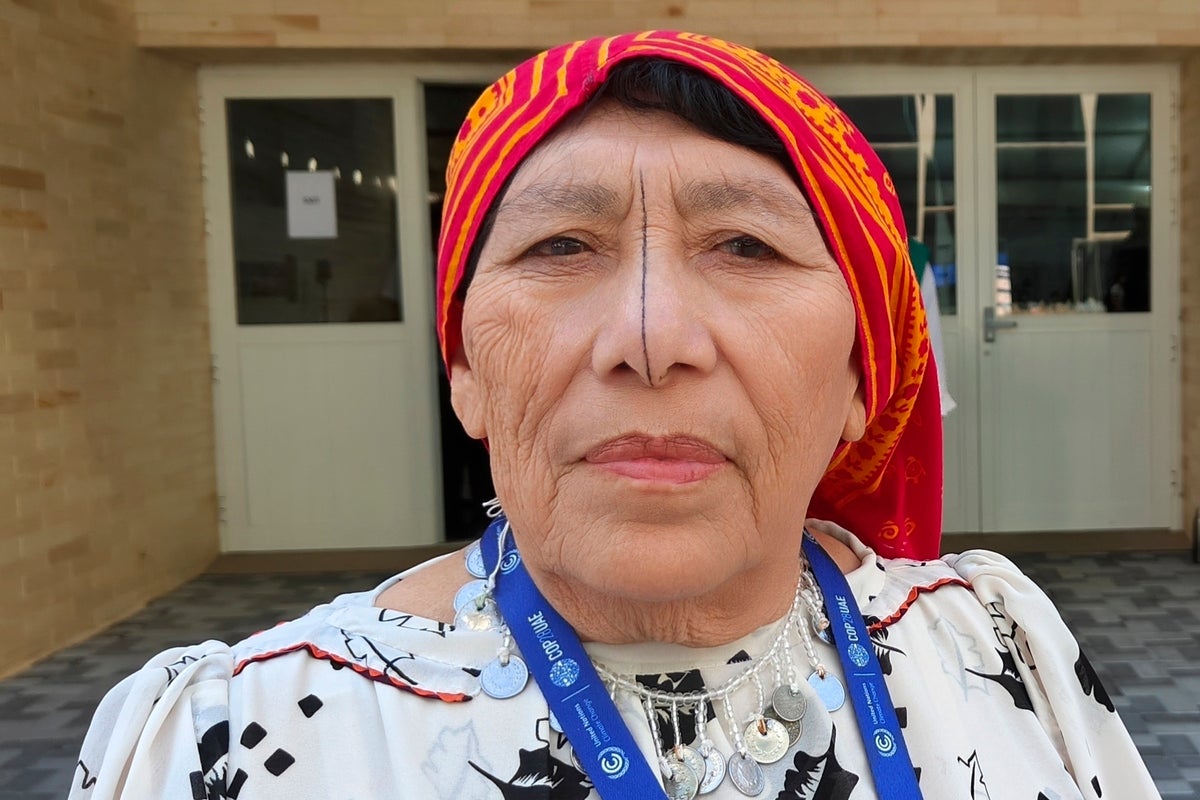
With a sprig of leaves and rainwater carried from her island in the Philippines, Grace Talawag delivered a prayer and a blessing for her delegation and onlookers in a negotiation hall at the United Nations climate summit. The leaves included bamboo, to represent the resiliency needed to contend with climate change, and jade vine, a creeping plant that Talawag said “will climb any tree up in the jungle to see the light."
The latter symbolizes her hope that negotiators at the COP28 talks “will listen to the voices of the Indigenous people" — especially Indigenous women who have traveled to the conference to share valuable insights into addressing some of the challenges of climate change.
Frontline communities will exchange their best practices at the climate talks. But they'd still like to see a more inclusive summit that makes them an integral part of the global dialogue, Talawag said.
“Even in the loss and damage fund we are not on board but just present as observers,” she said, referring to an agreement finalized on the eve of the talks for compensating developing nations hit by climate extremes. “This needs to change.”
Briseida Iglesias, 68, of Panama, spearheaded a woman-led movement, the Bundorgan Women Network, that came up with a way to cultivate eucalyptus plants to reduce soil salinity — a major problem in coastal areas where seas are rising now because of planetary warming. The group did so by using ancestral knowledge of medicinal plants and planting those in combination with the eucalyptus.
On the grand stage of COP28, Iglesias hopes this solution can be showcased to benefit other countries.
“We can’t wait for governments to act,” she said.
In Bangladesh, Indigenous women devised a different solution to the encroaching seas that threaten to spoil the land of farmers already living under the poverty line. They're using float farms and rafts to grow organic agricultural products, said Dipayan Dey, chairman of the South Asian Forum for Environment (SAFE), which helped the community to scale up the project.
“The concept of floating farms has expanded to the Sundarbans areas of India and also in Cambodia, offering a relevant solution for other countries struggling with rising salinity,” he said.
From the Indian state of Gujarat, Jasumatiben Jethabai Parmar detailed a safer alternative to the increased use of chemical pesticides that has accompanied climate change. Jeevamutra, made from neem leaves, cow urine and chickpea flour, is an eco-friendly treatment rooted in centuries-old practices.
“We have presented to the Indian delegation to propose our solution to other developing countries, these have been solutions for us for centuries and can be relevant more than ever now due to climate change,” she said.
Shehnaaz Mossa, who oversees finance at SouthSouthNorth, a nonprofit that facilitates climate-resilient development, said it's important to connect the meaningful efforts happening at the community level with larger discussions. Local communities, she said, understand their needs and have the knowledge to scale up solutions effectively.
Hindou Oumarou Ibrahim, a Chadian environmental activist and geographer, emphasized the importance of combining traditional knowledge with science to create effective solutions.
“There is a need to get women from the Indigenous communities on the negotiation table because we have the solution and we are already implementing it on ground," she said during a session focused on women's contributions to building a climate-resilient world.
___
EDITOR’S NOTE: This article is part of a series produced under the India Climate Journalism Program, a collaboration between The Associated Press, the Stanley Center for Peace and Security and the Press Trust of India.







